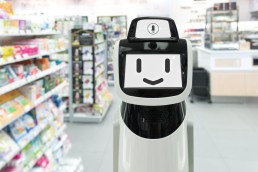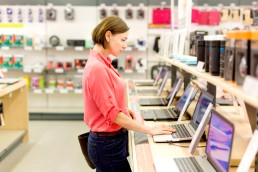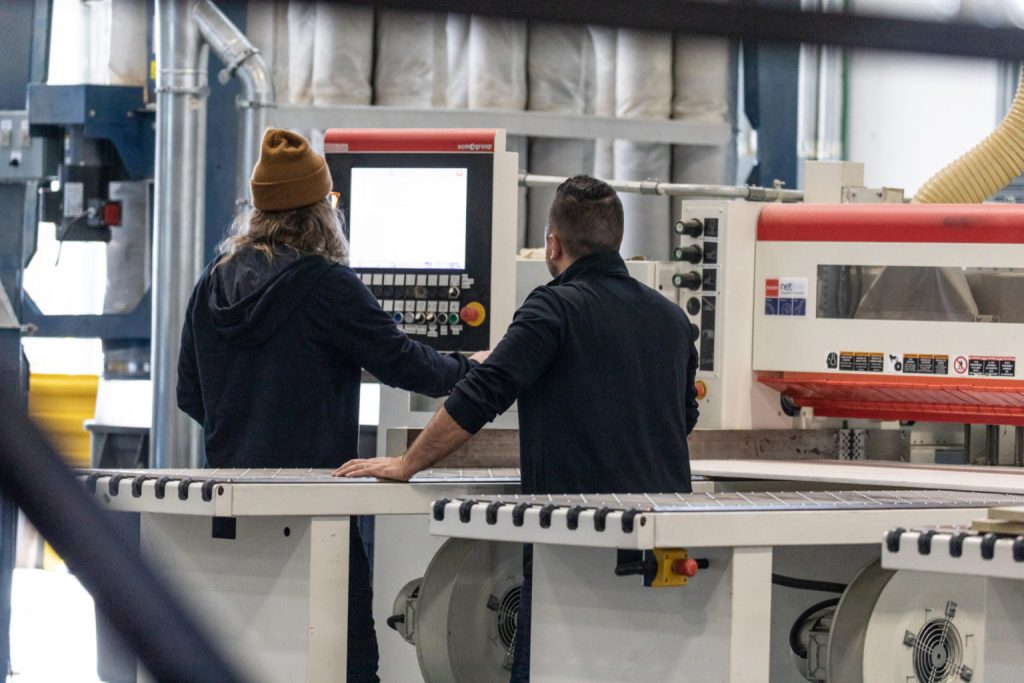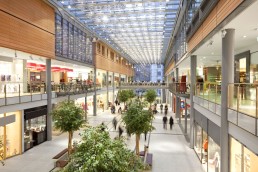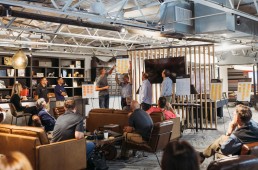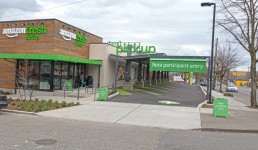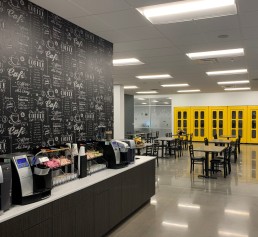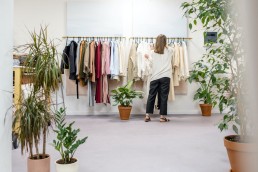Top 10 Retail Trends in 2023
Top 10 Retail Trends in 2023
The last several years have been a wild ride for the physical retail industry. Brick-and-mortar stores are facing an uphill battle as the world continues to place more faith and attention on digital shopping experiences. But while it may be more difficult to succeed with a physical retail store in 2023, it’s not impossible. The key? Paying attention to shifting retail trends and understanding when it’s time to change with the times.
Here's the deal. Consumers are looking for a specific shopping experience when they leave the house — something that makes them want to give up on the convenience of shopping from their couches and venture into the real world. Unfortunately, if you’re a business owner who thinks staying the course is best, you could see your dreams go up in smoke. A business needs to adapt to its audience. The wants and needs of that audience are constantly shifting as the world barrels into the future. A new year has just started, and with it comes a wealth of new trends to watch out for. If your business will survive 2023, you’ll need to know what your audience expects and implement those changes into your business model.
In this article, we’re counting down the ten biggest retail trends that brick-and-mortar stores should pay attention to in 2023. Ready to learn more?
Let’s begin!
1. Self Service Checkout Options
If you’re going to compete with the ultra convenience of ecommerce, you’ll need to make the in-person shopping experience a lot more convenient. Nothing makes customers long for the ease of online shopping more than massive checkout lines when trying to leave a store. That’s why self-service checkout has become such a huge trend in the retail industry. We’re starting to see major clothing retailers, supermarkets, and even small mom-and-pop gas stations implementing this technology.
There are different ways you can bring the ease and convenience of self-service checkout to your store. The simplest and most common way is self-checkout kiosks, like those implemented by Walmart, Target, and other massive retailers. Here, the customer takes on the role of a checkout attendant, scanning all of their items at a mini register and making their payment. But oftentimes, these systems are confusing for customers, and large lines form anyway. While it saves you on payroll, there are a few other high-tech options you can look into.
For instance, the ceiling camera approach is part of the “Just Walk Out” technology that huge retailers like Amazon use at their physical stores. A series of ceiling cameras and shelf sensors monitor inventory, taking stock of everything a customer puts in their cart. Then, the customer simply walks out of the store with their items, and their linked payment method charges automatically. By implementing a system like this, customers will never have to wait in line again. Then you’ve got smart carts and smart counters, where customers place their items in a cart or on a counter to scan them.
There’s no looking around for barcodes whatsoever. This creates a simple self-checkout experience. You also don’t have to purchase all new carts for your store when implementing smart carts. Clip-on devices can easily turn any cart into a smart cart.
Finally, there’s an app self-checkout experience, like the one Disney is rolling out throughout its retail locations. With this feature, customers scan their items through an app and pay using an attached payment method. They’re then given a QR code which an attendant scans before leaving. Once the attendant has confirmed each item, the customer is good to go.
Pro Tip: When using this method, it’s important to have several attendants to prevent a long queue from forming.
2. Elevated Retail Experiences
Elevated experiences will be crucial for businesses as we move into 2022. Customers want these experiences, and if they can’t get them from you, they’ll go where they can. One of these elevated experiences is appointment shopping. This is something that came into prominence during the Covid pandemic and has stuck around in its aftermath. Appointment shopping is exactly what it sounds like: It’s when customers set an appointment to come into your store and shop. The beauty of appointment shopping is that it allows customers to select a time when the store won’t be overly crowded and build a meaningful personal relationship with your business.
There are two different kinds of appointment shopping:
- Solo appointments allow customers to browse as normal when there aren’t many people around.
- Itinerary appointments are structured and usually revolve around a specific event or purpose. A great example of this would be product demonstrations and education events that you hold in-store.
Of course, you shouldn’t create an all-appointment business model. You need to encourage walk-in traffic as well. But set aside specific times for appointment customers and start cultivating those relationships. It’s also essential to integrate more technology into your shopping experience. This could include innovations like allowing customers to create a profile that tracks their buying habits to create a more personalized shopping experience. You can also send push notifications to customer devices, letting them know about various personalized deals when they enter your store.
3. Omnichannel Shopping
Customers in 2023 demand an omnichannel retail experience. That means your physical store needs to work off the same information as your website and app, creating a seamless hybrid experience from one location to the next. For instance, some shoppers will want to check your inventory online to know for sure that you have an item in stock before heading to your location. That’s why it’s essential to connect your brick-and-mortar inventory system to your online platforms. Some customers want to make their purchases online and pick them up in-store, later. That means you’ll need to offer fulfillment services. In other words, when a customer orders an item using your app and selects a “pick up in store” option, you’ll need a designated place for them to go once they arrive.
Some businesses have a fulfillment counter, usually in a central location within the store that’s easy to find. Others, like Best Buy, have fulfillment lockers where customers can scan a mobile code and pick up their items from a locker within the store. In the past, it was enough to simply offer a multichannel marketing experience. That was when a business offered multiple platforms like a website, app, and physical location, but they weren’t connected. What you did on the app couldn’t be applied to anything in-store, and vice versa. But in 2023, that’s not going to cut it any longer. And that brings us to …
4. Same-Day Delivery
In 2023, online shoppers no longer want to wait for their items. The days of products taking two, three, or even five days to ship are over, and they aren’t coming back. Modern consumers want everything right away, meaning if your business wants to stay relevant and profitable, you need to offer same-day and next-day delivery options. Companies like Walmart offer this service, allowing customers to purchase anything from groceries to clothing and choose a time to receive their items that day. But these items aren’t coming from a fulfillment center. They’re coming right from physical retail locations.
Instead of being sent out via USPS, these items are delivered by couriers directly from the retail location to the customer’s door. If the customer orders something that isn’t in stock, the system can recommend replacement items before the delivery window closes. Walmart’s app learns the buying habits of these delivery customers and often makes suggestions or alerts them when items they’re interested in come in stock or go on sale.
While we want to draw customers into our retail locations, we can offer a similar experience by allowing them to purchase from our physcial brick-and-mortar stores, online. Then, an in-store representative can deliver the items to them same-day or next-day, depending on store hours and availability.
5. Focus on Sustainable Brands
Back in the day, companies could market any product they wanted, even if the businesses that manufactured those products were involved in less-than-friendly environmental practices. Those days are long since over.
We now live in the information age, where any question can be answered instantaneously. That means people are starting to research the products they’re interested in. They can find out the environmental impact these products have and what brand message the manufacturers put out. Everything from EPA reports to tweets from CEOs can be discovered. As more millennials and Gen-Z shoppers flood the market, these sustainability considerations are becoming a huge part of the buying process. That’s why you have to think about the products you’re offering.
Ask questions like …How are they manufactured? Are the companies creating them using sweatshop labor and skirting environmental mandates, or are they created using sustainable and morally honorable practices?
As of the fourth quarter of 2022, 77% of consumers stated that sustainability is an important factor influencing their buying decisions. In 2021, that number was only 69%. When speaking on the importance of sustainability, 44% of consumers stated that environmental impact was the main reason they shop for sustainable items.
6. Payment Flexibility
We spoke earlier about the checkout process and ways to make it more accessible and convenient for customers. This also extends to the payment methods you offer at the point of sale. Regardless of whether customers are paying via their phones or at a physical register, there should be flexible payment options in place. Customers today are wary of data hacks and identity theft, and many don’t want to give their payment information to a wealth of retail stores. The answer?
Consider accepting payment options through third-party platforms like PayPal and Venmo. Your customers already trust these platforms, and they’re more likely to make a payment when there’s protection from data-hacking threats. Additionally, you can convince customers to make larger purchases when you have pay-over-time options.
Some services, like Affirm, cover the cost of the items purchased by a customer while enrolling them into a payment plan. A large purchase totaling hundreds of dollars becomes infinitely more palatable when the customer can make smaller monthly payments.
These options are often available through ecommerce platforms like Amazon, so by offering them in your physical locations, you’re directly competing with the online shopping world.
7. Labor Shortages
Not all trends are positive. Since 2020, businesses have been struggling to fill the void left by labor shortages. That issue isn’t going to magically go away in 2023. According to the Washington Post, toward the end of 2022, 70% of retail job openings are still unfilled, and that will continue into this brand new year.
In other words, if you want to attract skilled retail employees, you need to make the experience worth their while. Take a look at the salaries and benefits you’re offering.
What can you do to sweeten the deal and attract people to fill your vacant positions? Perhaps additional vacation time or a system of annual raises will help make your business a viable career opportunity for those looking for work. Of course, the other answer to these labor shortages is to invest more in automation technology that can allow you to shrink your workforce.
Smart carts and self-checkout options, like those we discussed earlier, can help ease the burden on in-person staff and create a business plan that can run with fewer employees. While the investment in this technology will be substantial upfront, your business will save money on payroll and benefits costs in the long run.
8. Livestream Shopping
Ecommerce businesses are constantly using influencer marketing to push products and services. So, why shouldn’t your physical location use these popular figures, too?An influencer is a person with a large social media following that promotes a product or service in exchange for some form of compensation. This compensation might be monetary, or it could be something as simple as free products from your store. It all depends on the individual influencer and what their goals are. Ecommerce stores have influencers try out their products or talk about them. The influencer then sends buyers to the ecommerce store with a promo code to track their sales and potentially pay a commission. But an influencer’s usefulness doesn’t begin and end with ecommerce platforms.
You can also utilize their reach and the trust they’ve established with their audience for your physical location. Simply have the influencer use a live streaming feature on a platform like Facebook, TikTok, or Instagram to stream their shopping experience in your store.
They can then edit that stream to an easily shareable video where they walk their followers through the shopping experience, showing off all your store has to offer. Livestream shopping has been a phenomenon in China for some time, and it’s starting to cross over the Pacific into US markets. But is it effective? The Influencer Marketing Factory actually discovered that 36% of a surveyed 1,000 US consumers had purchased something during a live stream. One way to improve your odds of success would be to choose your influencers carefully. Ensure that their audience is large enough to matter and that it can crossover with your target demographic.
9. Hybrid Stores
One way to diversify your offerings and increase your audience is to create a hybrid shopping experience. In recent years, we’ve seen businesses that were once strictly retail expand their horizons, becoming hybrid establishments that cater to a wider variety of consumers. The most notable examples would be Target and Walmart.
These retail giants have converted all of their superstore locations into hybrid retail/grocery stores. While your foray into hybrid retail doesn’t have to be quite so dramatic, consider experimenting by creating an event space or opening up a small coffee shop in your retail location.
10. Augmented Reality Features
With the creation of the metaverse, we’re seeing a huge push in society toward virtual reality and augmented reality platforms. However, despite this, the retail industry has been slow to adopt this growing trend. Only 1% of retailers currently use AR or VR features as part of their business model, but it’s not as difficult to implement as it might seem from the outside.
Simply creating an Instagram filter or incorporating QR codes that could be scanned for additional product information can go a long way toward making your business an AR hot spot. You could even use VR to allow customers to see what it’s like to use your products or create images of themselves wearing the clothing sold by your store. You could also incorporate a feature that would let customers digitally place your items in photos of their homes to see how a certain piece fits within a room.
As 2023 begins, the retail landscape is poised for a number of great shifts. By embracing emerging trends, you’ll be able to provide the best possible experience for your customers in 2023 and beyond. If you want to take it a step further, subscribe to VIRA's newsletter for the latest forecasted trends straight to your inbox.
Top 4 Trends Among Retail Shopping
How Retailers Can Provide The Best Possible Shopping Experience
Who would have guessed that in-store shopping would be thriving the way it is today? Over the last two years, most of us got comfortable shopping for items – the necessities and nice-to-haves – online. According to McKinsey & Company, ecommerce grew three times faster in 2020 yet less than two years later, people are stepping away from the computer and venturing out to the stores go shopping.
That said, if you’ve visited any of your favorite retailers over the last 12 months, you’ve probably noticed that in-store shopping looks different than it did a mere two years ago. “Retail is reinventing itself in part due to the pandemic, but also due to what customers want,” Ryan Van Sluyters, Key Account Manager at VIRA Insight said. “And while customers’ habits have changed, they still want a positive overall experience.” In response, retailers understand it's not business as usual and are implementing changes to keep their customers happy and engaged.
Van Sluyters and his team have seen the following trends emerge as retailers respond to what their customers want:

1. Frictionless Shopping
The concept of buying online and picking up in the store, often referred to as BOPIS, is a preferred way of shopping for many these days, particularly among the younger, more tech-savvy generations.
“Consumers don’t necessarily want to speak with anyone to complete a transaction if they don’t have to. Rather, they want a frictionless shopping experience where they get in, get their product and get out,” Van Sluyters said.
To help facilitate this, many retailers have implemented Dark Stores for order fulfillment in one of three ways: for curbside pickup with a reserved area in the parking lot for these orders; for in-store pickup with a dedicated area inside the store; and for home delivery. Dark Stores contribute to a frictionless shopping experience, as well as provide other benefits for retailers and consumers, including fast and efficient distribution of products, better inventory control management, enhanced SKU management and the ability to stock a wider range of products.
2. Stores Within a Store
Stores within a store are an emerging trend with big retailers today. They are attractive because they help the host store attract more foot-traffic, and they open the potential for new relationships between brands. One example is Lovesac, which piloted a pop-up store within Best Buy two years ago and has since steadily opened several throughout the country. It’s a relationship that makes sense; people need a comfortable place to sit while watching their new TV or surfing the web on their new laptop they purchased.
Target also understands the benefit of leveraging other brands to increase foot traffic and thus, partnered with and opened Ulta Beauty mini stores in many of its stores across the country, and now Sephora has begun rolling out mini stores in Kohl’s. According to Van Sluyters, cosmetics always bring increased foot traffic and partnerships like these will go a long way for the brands involved.

- Supply Chain and Staffing Issues
The double-whammy of the supply chain and staffing issues is wreaking havoc on inventory, fulfillment and the consumers’ experience. But many retailers are using technology to help streamline order tracking, manage customer loyalty programs and even communicate directly with customers. Technology is also being deployed on store shelves to help retailers track products in real time and to see how customers interact with products on the shelves.
But the issues don’t stop there. The labor shortage is also affecting things like fixture installation at the store level. As a result, vendors have looked at ways to develop and deliver easy-to-assemble modular systems so the end-user in the stores can easily put them together, saving time and manpower.
- Sustainability
While this isn’t a new issue, many retailers are now paying even more attention to their carbon footprint and implementing eco-friendly, sustainable practices within their stores. Of course, we’ve seen the trend of eliminating plastic bags and making the commitment to use more renewable energy, but now some retailers are going further and have begun programs that include recycling the plastic barriers that were installed during Covid when they need replacing, and the installation of fixtures made from sustainable and plant-based materials.
“Consumers care about a sustainable future and shop with this in mind. As such, they want to spend their dollars with companies that provide eco-friendly solutions,” Van Sluyters said.
As customers return to the stores, retailers need to be ready to provide the best possible experience for them. Are you ready?
Let us help ensure you are; contact us today to learn what we can do together!
At VIRA Insight, the Future is Sustainable
Designing a Sustainable Future
Your customers shop with sustainability in mind.
They seek out eco-friendly products and reuse and recycle plastics and paper whenever possible. They care about doing their part to build a sustainable future. And they want the companies they do business with to care, too.
We can help with that. At VIRA Insight, we design built environments sustainably, working with our customers to find solutions that work for their business and the environment.
Because we’re dedicated to reducing our own environmental footprint, we can help you deliver for your eco-conscious customers. We’ll collaborate with you to find solutions to all your infrastructure needs, ensuring that you meet your sustainability goals without sacrificing quality or affordability.
The More You Know
The more we know, the better we can do. At At VIRA Insight, it all starts with gathering information. That’s why our sustainability efforts begin with detailed tracking of energy and utility costs.
We’re determined to contain and manage unnecessary energy usage. That’s why we implement energy-saving technology like motion-activated lights, which are installed across our entire facility. This and other common-sense measures help us save money and protect the environment.
Knowing exactly what we’re using and how we’re using it gives us the insight we need to meet our goal of reducing our overall carbon footprint by 2031.
Future Focused
Everything we do at VIRA Insight is focused on the future. We know that to thrive tomorrow, we need to conserve resources today. That’s why sustainability is central to the way we design, manufacture, and deliver for our customers.
Taking a long view requires a commitment to sustainability. It’s why we’re dedicated to reducing our environmental footprint and reusing and recycling materials whenever possible.
Goodbye to Stryofoam
When it comes to sustainability, we’re covering all our bases. That’s why we’re in the process of continually assessing and reassessing our packaging materials. Because it’s not just about what we design and make. It’s also about how we deliver it.
As we evaluate packaging materials, we’re making it a point to eliminate styrofoam wherever possible. Many recyclers don’t accept Styrofoam, but we’ve taken the time to find one that does, ensuring that none of the styrofoam we use in packaging ends up in a dumpster.
This is just one example of the many ways we’re focused on reducing waste at every step along the process, from design and fabrication to delivery and installation.
Reduce, Reuse, Recycle
Why send something to the dumpster when you can reuse or recycle it?
At the heart of VIRA Insight’s Green Initiative is a robust recycling program. We constantly evaluate the way we use raw materials like wood, plastic, metal, and cardboard. By exploring new and innovative ways to reuse, recycle, and sell leftover materials, we’re getting closer to our goal of significantly reducing waste.
Customer Connection: Five Reasons Focusing on the In-Store Experience Is Key
Customer Connection: Five Reasons Focusing on the In-Store Experience Is Key
Optimizing Customers In-Store Shopping Experience Is More Important Than Ever
This holiday season, many customers are logging off their computers, getting out of the house, and enjoying the experience of shopping IRL. For many, in-person holiday shopping with friends and family is an annual tradition, something that can’t be replaced by an online experience.
When a customer walks into your store, you want them to feel welcomed and inspired by their surroundings. At VIRA Insight, we’re experts in executing the details that enhance the look, feel, and function of retail spaces. From customizable interactive displays to infrastructure that offers a stellar Buy Online, Pickup In-Store (BOPIS) experience, we’ve got you covered.
As you welcome customers back to in-store shopping this holiday season, here are a few things to consider:
Make Connections
Heading out to a favorite mall or store is often about more than just snagging that last-minute present or finding the perfect stocking stuffer. It’s about spending time with loved ones, feeling connected, and celebrating the season in a festive environment.
When a customer walks into your retail space or stops by to pick-up an online purchase, you can make a strong connection with them through the design of your space. The right shelving, signage and displays can transform a shopping experience, making it more accessible, enjoyable, and even entertaining.
Thanks to new interactive technologies, in-store displays can now be updated in real-time to create customizable shopping experiences. Adding digital displays with brand-specific or holiday messaging makes connecting with customers easier than ever.
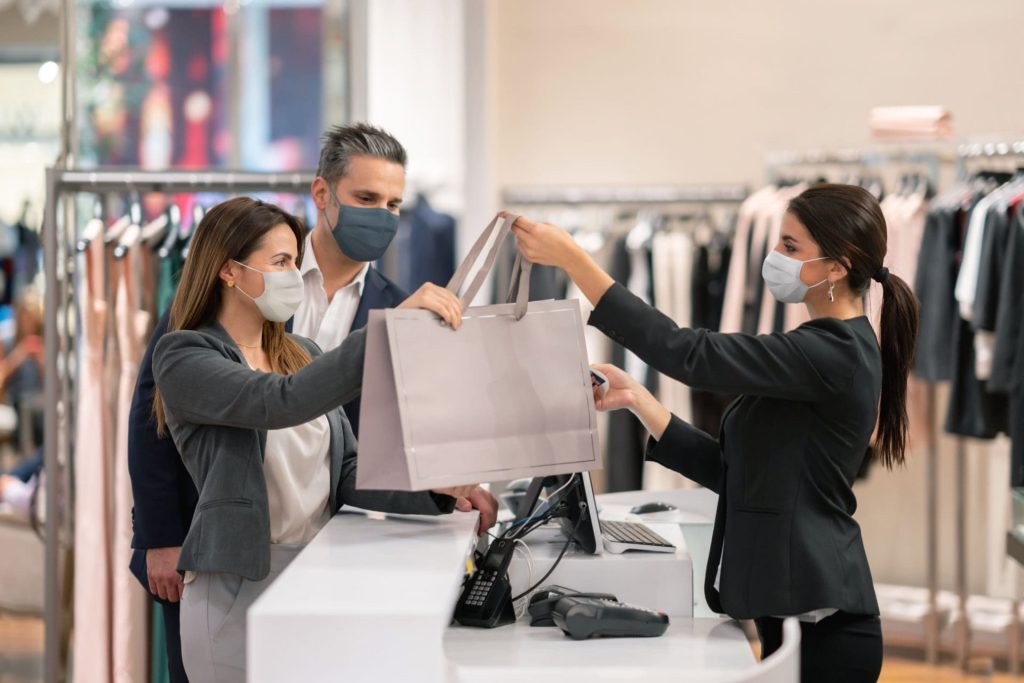
Share Experiences
When a customer decides to purchase something in-person instead of online, it’s often because they’re craving the experience of shopping. After all, sometimes the process (browsing, perusing, comparing items) is as fun and satisfying as the result (purchasing something you want or need).
That’s why it is important to consider every aspect of a customer’s in-store experience. For instance, eye-catching digital displays and other customizable technologies can enhance how a customer moves through a retail space or interacts with products. In addition to making the shopping experience flow more seamlessly, customizable lighting, branding, and displays also enhance the look and feel of a space.
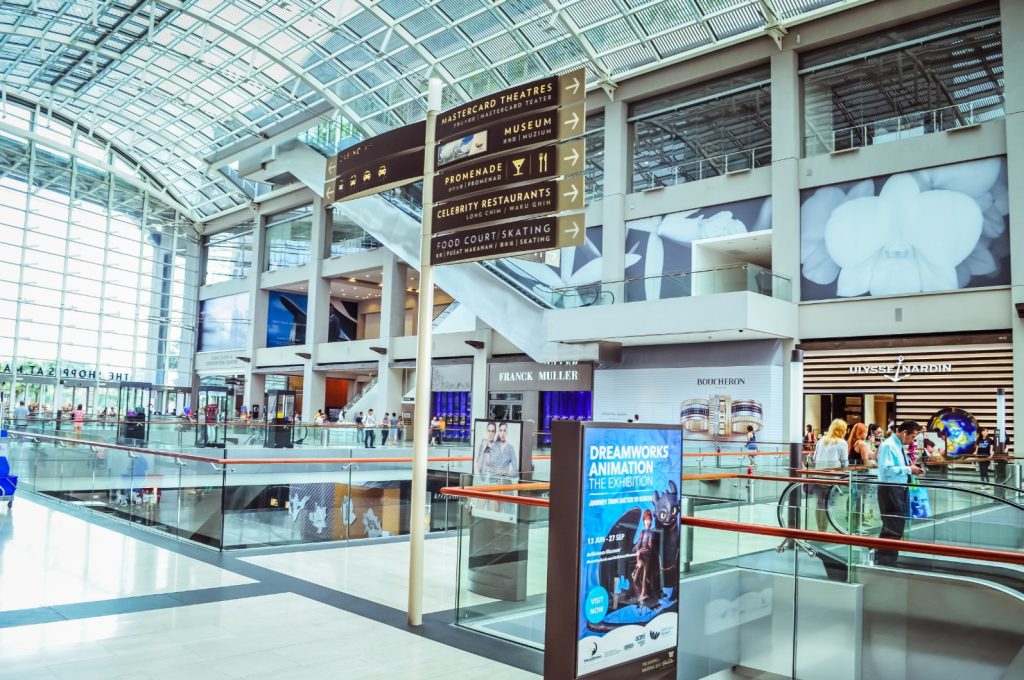
Stay On-Trend
The hottest trend in retail infrastructure right now is technology. With the simple addition of a monitor or interactive screen, the look and feel of your store can be instantly refreshed.
While traditional signage and displays must be installed and uninstalled with every new product, brand update, or season, a digital display offers permanent infrastructure that can be updated or switched out easily and often.
Pass On The Savings
If adding new technology to your retail space sounds expensive, get ready to be happily surprised. Our unique systems were designed to be flexible and affordable. That’s why we’ve invented new ways to update your existing infrastructure so that you can refresh your store’s look without breaking the bank.
By adding screens or monitors to preexisting shelving and gondolas, we can help you keep costs down while upping the wow factor. Your customers will feel more welcomed in a space that is digitally customized to meet their needs. And they’ll appreciate the savings you pass on to them through budget-savvy updates to your space.
VIRA Values: Building a Culture Connected by Care
VIRA Values: Building a Culture Connected by Care
In May 2021, VIRA leadership held a townhall meeting and introduced a new take on our organizational values.
These tenets not only define how we show up—for each other, for our customers, for our vendors and partners, and in the community at large—they also drive our business decisions, our operations, and our culture. They give focus to our vision and provide direction for our mission.
ALL. TOGETHER. NOW.
With our organization, our partners, and our clients aligned around our shared ideals, VIRA is poised to reshape the way brands and consumers engage. Working together, sharing our knowledge and insight, we can build real, meaningful connections that succeed.
We’re proud to share our values with you, and we look forward to bringing them to life in our work and relationships.
VIBRANT
First, we are VIBRANT. We believe a healthy mindset fosters healthy interactions and a healthy work environment—and that all leads to a thriving, sustainable, profitable business. Healthy self, healthy workplace, healthy business. It’s all connected, and it starts within each of us.
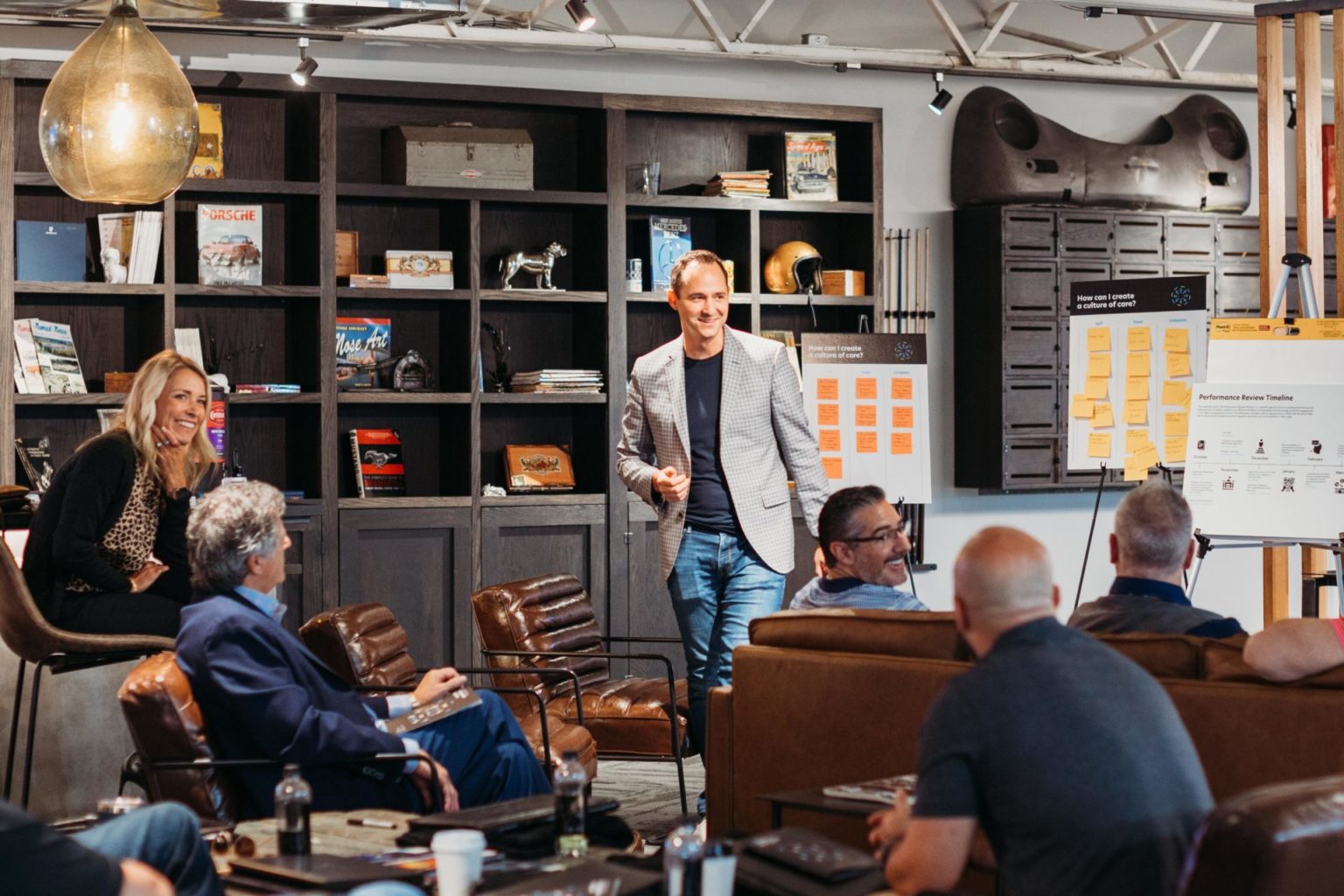
INTENTIONAL
We are INTENTIONAL. We think, speak, and act with purpose. When it comes to projects, we envision the results we want, anticipate challenges, make a plan, and move forward. Everyone at VIRA is empowered to make decisions. At the same time, we recognize that our choices have consequences. So, we consider their impact and choose thoughtfully.
RESPECTFUL
We are RESPECTFUL. We recognize that everyone is on their own journey. So, we meet people wherever they are, and we treat them as we want to be treated.
AGILE
Finally, we are AGILE. We’re always looking for a new way, a different way, or a better way to bring a client’s vision to life. We take time to understand a problem, gather information, explore possibilities, and test our ideas. We embrace the unknown, pivot quickly, and never settle.



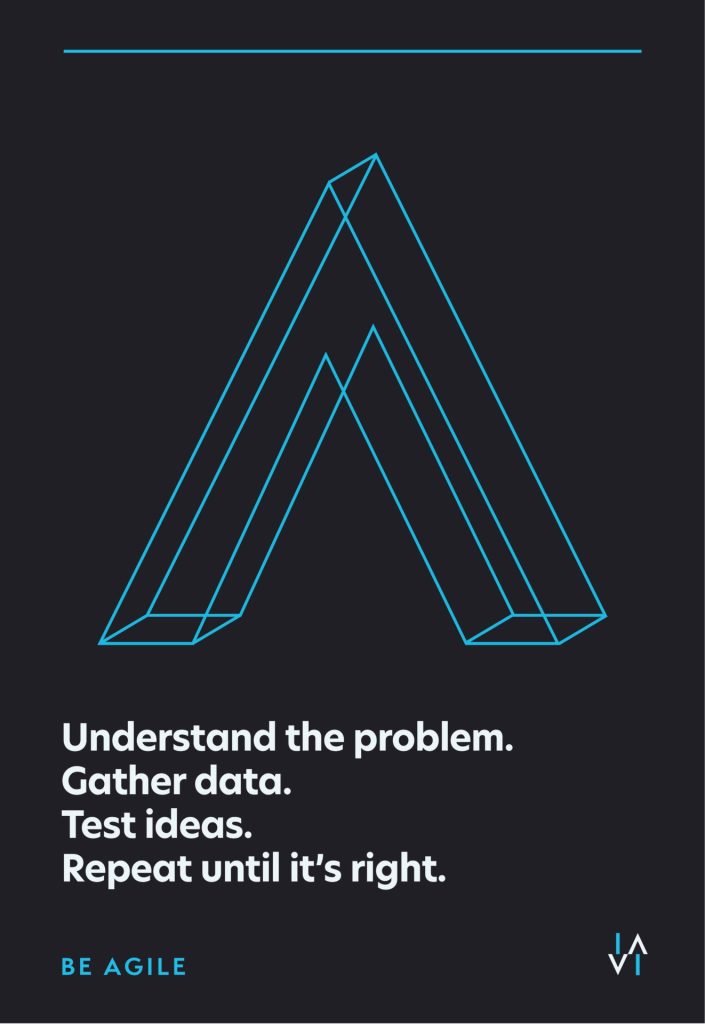
VIBRANT. INTENTIONAL. RESPECTFUL. AGILE.
These values are the starting point for everything we do—from partnering with clients to recruiting and recognition. When you engage with VIRA, you can expect us to live out these values every day, on every project, and with every interaction.
Into The Dark
Into The Dark
Dark stores offer a flexible and promising future for retail.
If there’s a takeaway from current logistics and shipping conditions, it’s that fully relying on the supply chain for online orders can often leave customers disappointed. This is where the “dark store” comes into play.
Embraced by Walmart, Albertson’s, Kroger, Stop & Shop, and Whole Foods, dark stores—or micro-fulfillment centers—may resemble typical grocery stores but are designed to fulfill customers’ orders without in-person engagement. And these warehouse-like spaces with their longer aisles, lack of checkout stations, and curbside pick-up areas are predicted to grow exponentially in the coming years.
Amazon.com’s first all-dark whole foods shop in Brooklyn, New York, has been so successful, there was a waiting list for new customer fulfillment upon its opening in the fall of 2020.
The company followed up with other dark outlets in cities such as Baltimore and San Francisco, and other retailers quickly followed suit.Even as some dark stores have returned to normal operations, the model’s advantages remain intriguing for retailers. Because micro-fulfillment centers are often smaller, they can be placed closer to customers’ homes than a larger warehouse. Analysts have also determined that the cost of delivering groceries from micro-fulfillment dark stores is two times lower than from a more centralized warehouse.
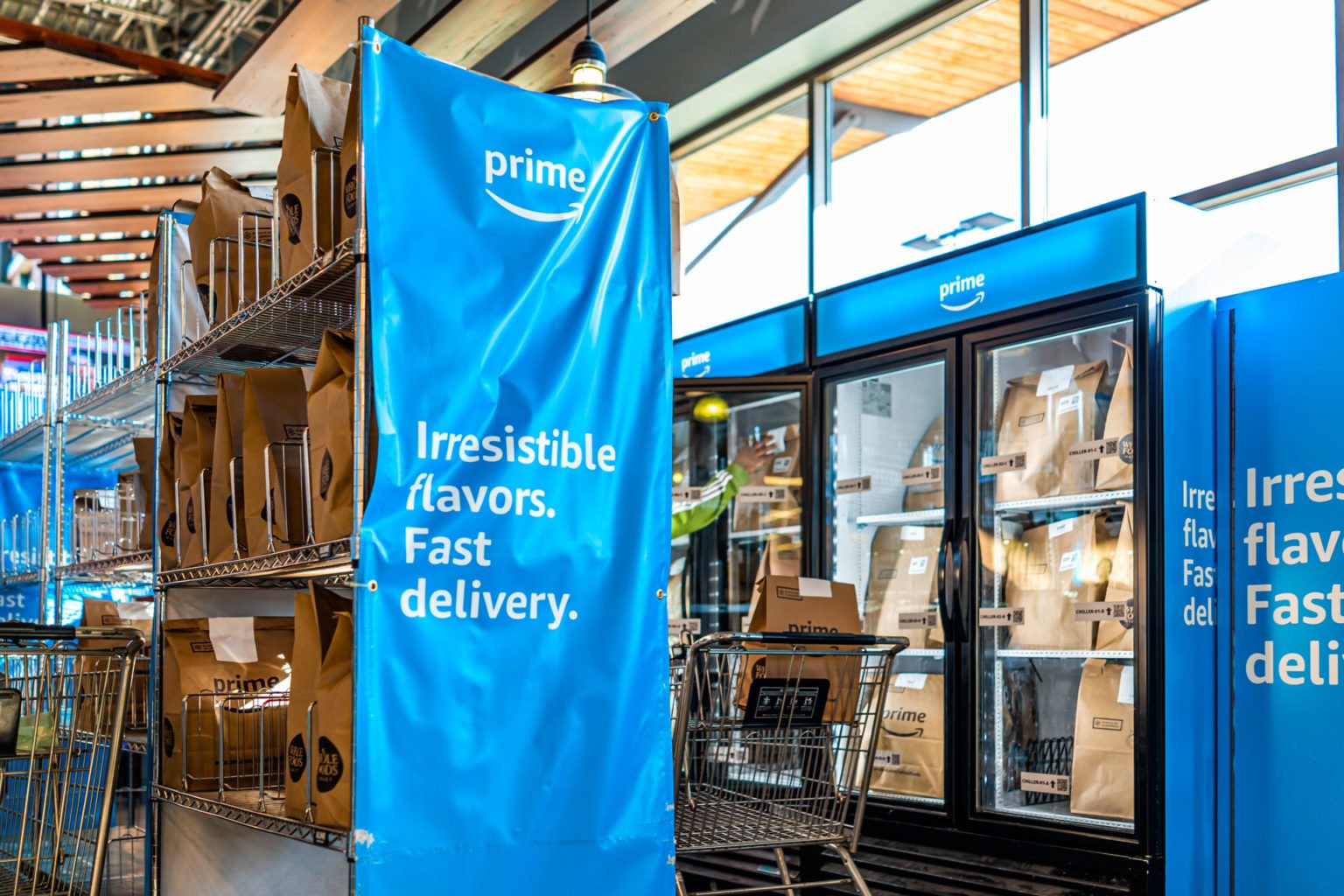
With no food bars, no checkout lines, and no in-store dining, dark stores also offer more space for products.
Retailers can tailor items in a dark store by what sells best in a specific region, allowing for adequate fulfillment by local demand. Data-driven forecasts can help optimize floorplans for easy picking, and an integrated workforce optimization system can help schedule staff when they are needed most.
At Vira Insight, we have developed many fixtures and solutions that dark stores of all types can implement for better efficiency. From our metal racks and gondola shelving to the back of house office furnishings that are the un-thanked but necessary fixtures that operate businesses, we know what your dark store needs.
By taking into close consideration what product is going where, our solutions help you meet the standards you set for your company. Built around the dimensions of a single commonly used product, our bread racks, for example, enclose bakery goods on all sides except the top. That way, fragile loaves are easy to access while being kept from damage. So, whether you prioritize on time delivery, quality, or freshness, we got you covered.
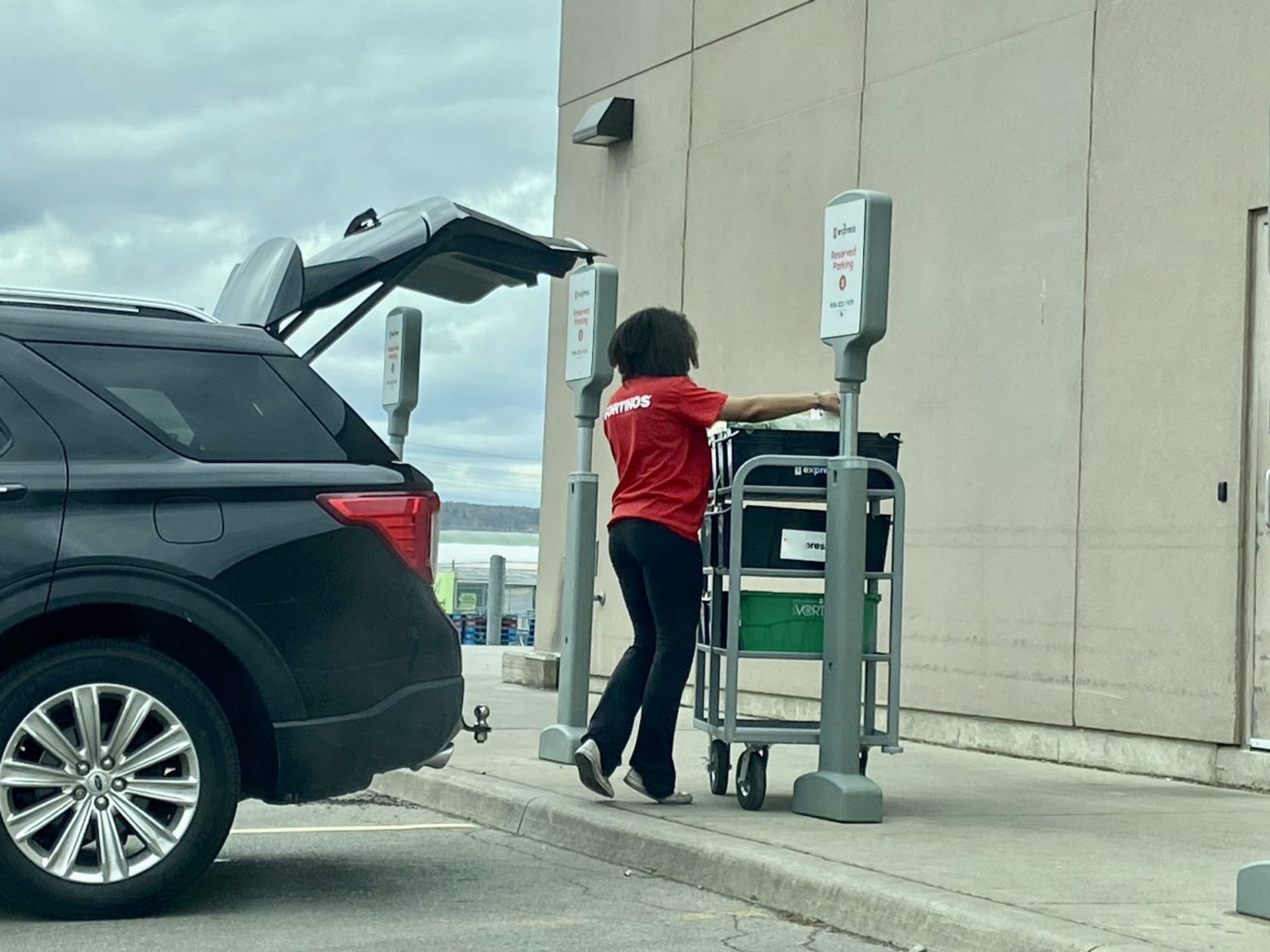
Meeting the demands of today’s consumer means perfecting the infrastructure and process of shopping on all fronts. A customer picking up orders from a dark store can announce their arrival via a tracking app, allowing workers to plan fulfillment in real-time. But perhaps the most significant technological advance for dark stores is the integration of robotics. The use of robot picking provides for a fast, accurate, and affordable selection of goods in a smaller footprint while adhering to the social distancing rules of the pandemic.
As more stores join the dark revolution, groceries may explore a hybrid model, where a mix of dark and non-dark retail gives an omnichannel approach to rapid product fulfillment. As online and offline shopping meld, consumers will have more flexibility in their shopping experience than ever before, leading to greater profitability for the dark stores of the future.
Is your company exploring the bright future that dark stores may have for your retail locations? Contact us today to explore what solutions may be right for you.
How to make work, work!
How to make work, work!
The post-pandemic evolution of the office has something for everyone.
At the beginning of the 21st century, the modern office was renowned for open, collaborative workspaces and fun-filled perks, including coffee bars, snack areas, and pool tables. But the post-Covid landscape offers a very different view of what defines a successful workplace.
As workers balance remote schedules with a return to headquarters, no longer is a ping-pong table an essential ingredient to engage employees. Instead, the new thoughtful and purposeful office offers a little more function along with the fun. Flexible, modern offices may value privacy more than ever before while still allowing workers to work the way that they feel the most comfortable.
Renowned for designing and manufacturing solutions for any built environment, vira insights was poised to pivot as we designed the offices of the future.
Accelerating our emphasis on supplying retailers and offices with custom-built solutions, we began at the source—our own office in Lewisville.
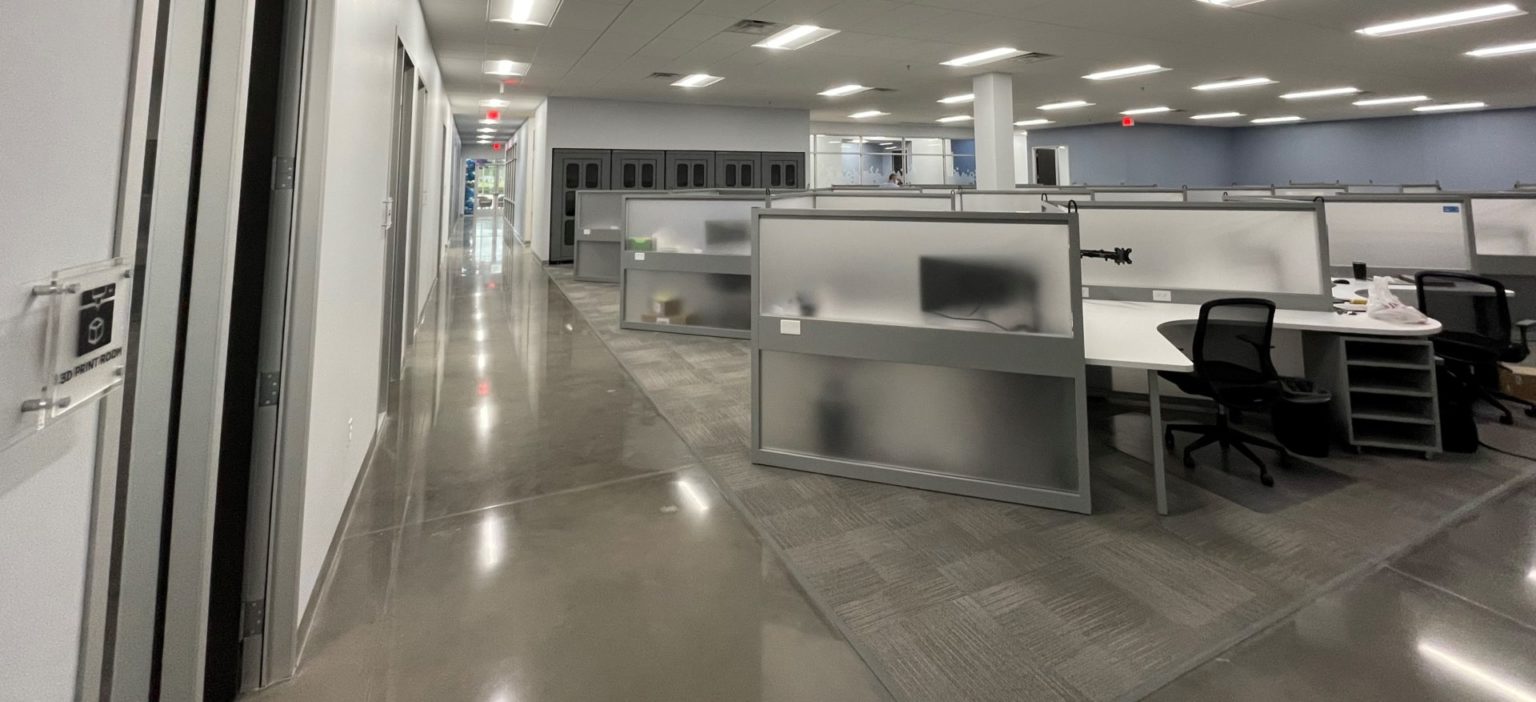
The newly designed 350,000-square-foot headquarters and manufacturing center VIRA unveiled in May of 2021 has already proved to be a successful template we can look towards as we deliver interior environments that can adapt to changing worker needs. The elbow-to-elbow seating of the past may be reconfigured to house fewer people in the same space, but it turns out this one-size-does-not-fit-all approach is better for workers and employers than previously imagined.
Says company CEO Jeff Jones in an interview from Dallas Innovates:
“We believe a space that is custom-designed for a business, its employees and its customers lead to performance. Our own office is proof: After returning our employees to a redesigned, safe environment, we have seen more productivity, more sales closings, more deadlines hit on time, and greater satisfaction among our customers. Your space truly makes a difference in how your business performs.”
Companies are leaning into adaptable configurations that can be combined and shifted in an array of combinations. Colleagues can then gather for meetings or give each other personal space for more intense collaboration. Walls can be moved, and see-through sneeze guards or laminated gallery panels will provide a barrier against germs and noise while still allowing employees to see and hear one another. Outdoor gathering spaces are another trend we’ll see more of in the coming years.
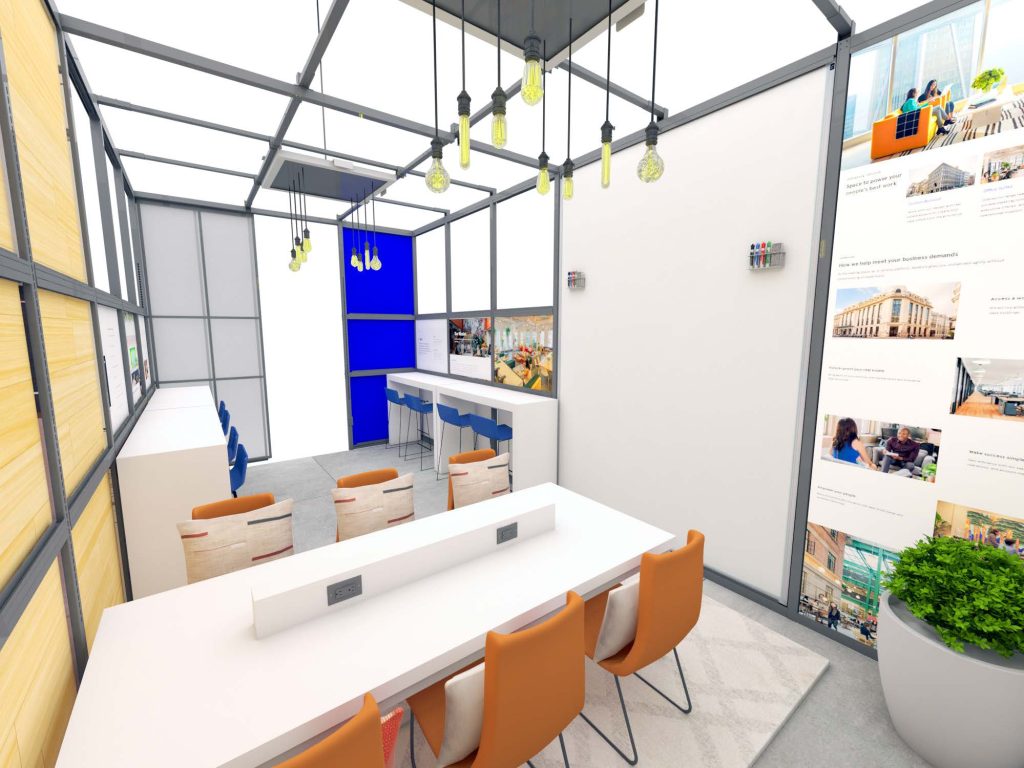
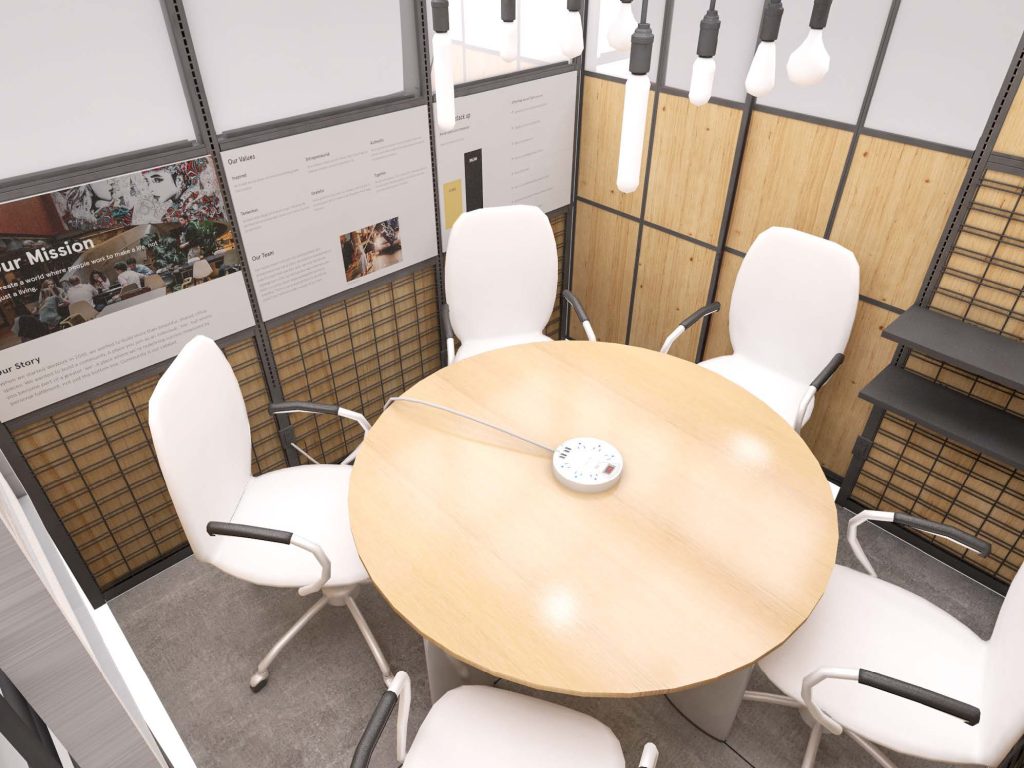
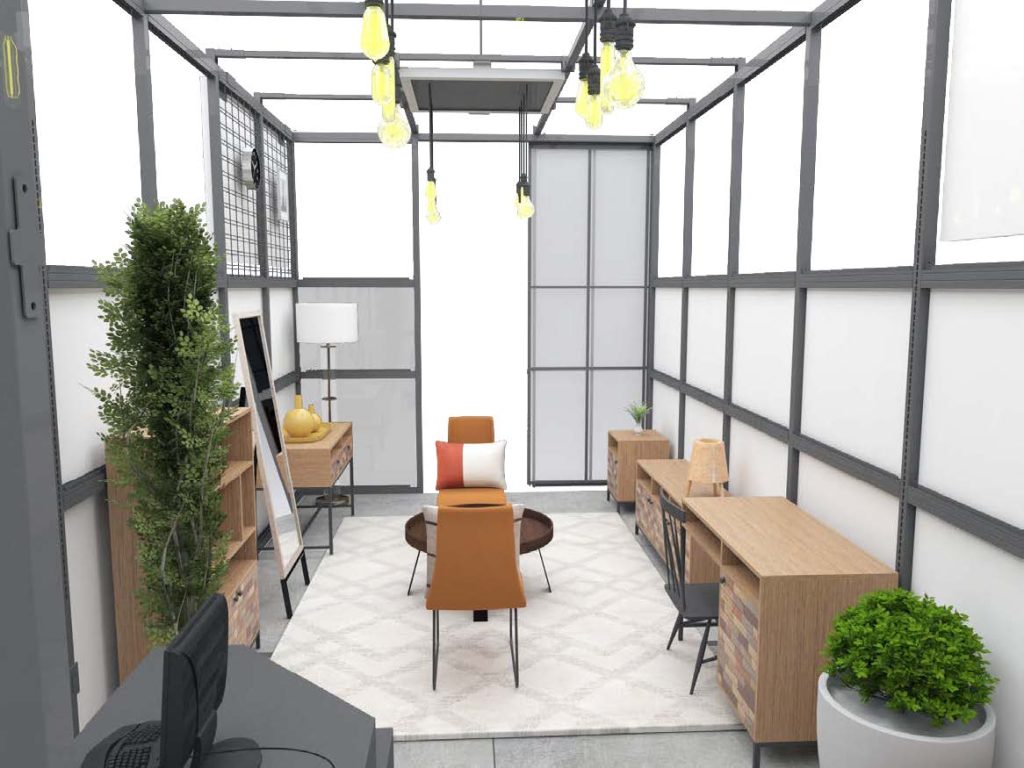
The use of a rotating schedule among workers allows greater distance between desks, and “hot desks”—a workspace that lacks a permanent occupant—can serve as a multi-use area between stints of at-home work. Allowing more than one worker to use a desk (while sanitizing in-between visits) also helps optimize space while accommodating a workforce that prefers to split their time between home and office.
Now-empty offices can be transformed into conference rooms, private meeting rooms, or space for guest speakers or special presentations. For businesses who have downsized, renting out unused square footage to freelancers or independent remote workers is a solution that allows maximum monetization. But it is perhaps the return of privacy that is the most significant—and positive—change in modern office design.
Debuting this year, vira’s sleek “silos” give workers an enclosed mini office complete with chic, modern seating and a built-in desk.
With the ability to install a standalone unit or utilize multiple “Silos” in a row, this customizable solution will help give employees a private enclave to ideate and create.
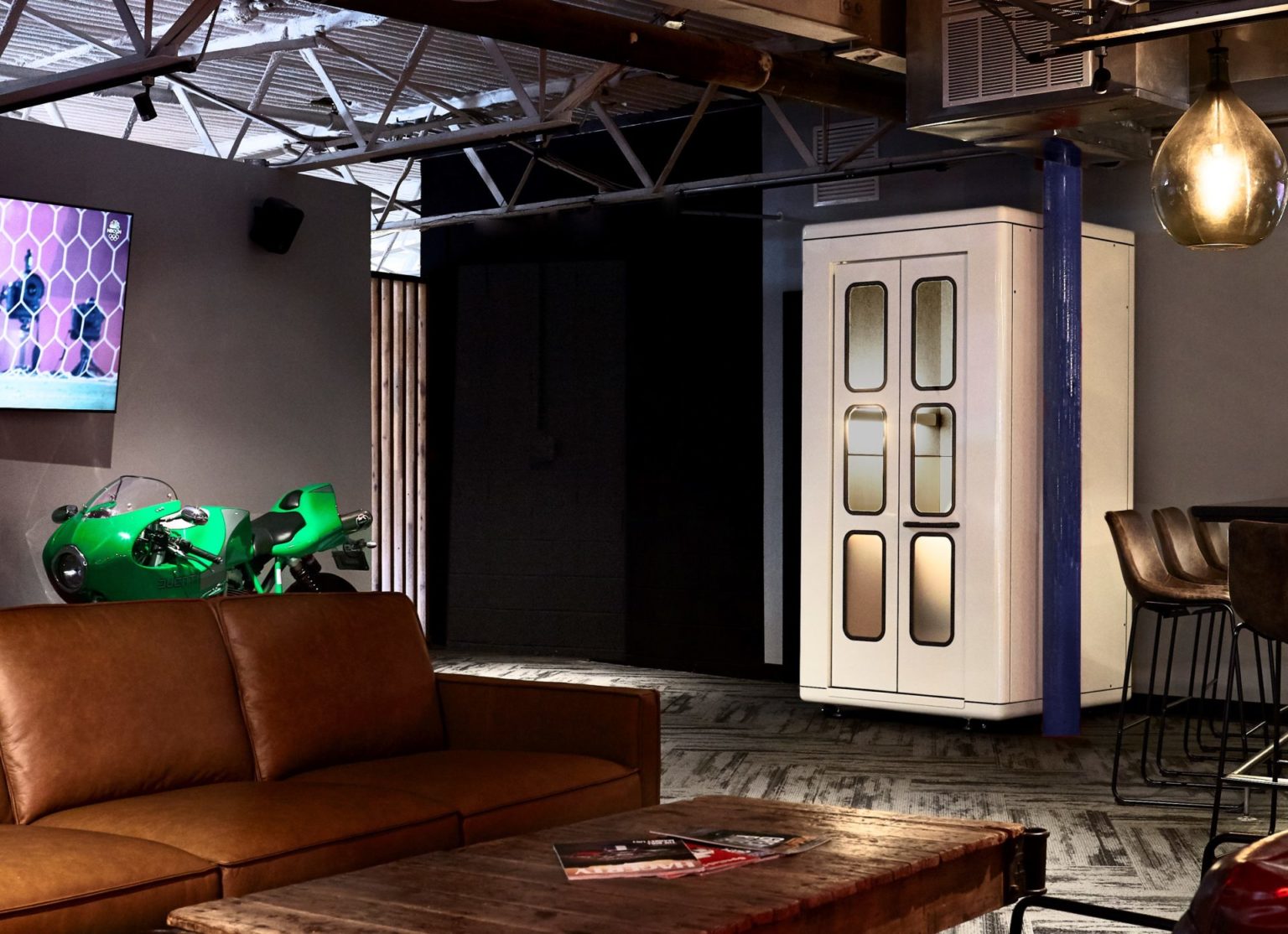
Through fulfilling the evolving needs of future workers, VIRA is uniquely poised to redesign spaces in the smartest and safest ways. With a newly launched materials sourcing and design services division dedicated to redesigning office spaces, our future—and the future of the built environments we create—looks bright. Untapped opportunities can become clever solutions for working in a post-pandemic world.
Retail Theft Is Rising: Here’s What You Need To Know Now About Loss Prevention
Retail Theft Is Rising: Here’s What You Need To Know Now About Loss Prevention
If your business experienced a significant uptick in retail theft during the pandemic, you’re not alone.
According to the National Retail Federation (NRF), 75 percent of companies reported an increase in Organized Retail Crime (ORC) in the past year.
While the COVID-19 pandemic exacerbated the problem, research shows that an increase in ORC will continue for the foreseeable future. Reacting to this problem after retail theft has occurred is costly, time-consuming, and ineffective. That’s why prevention is key.
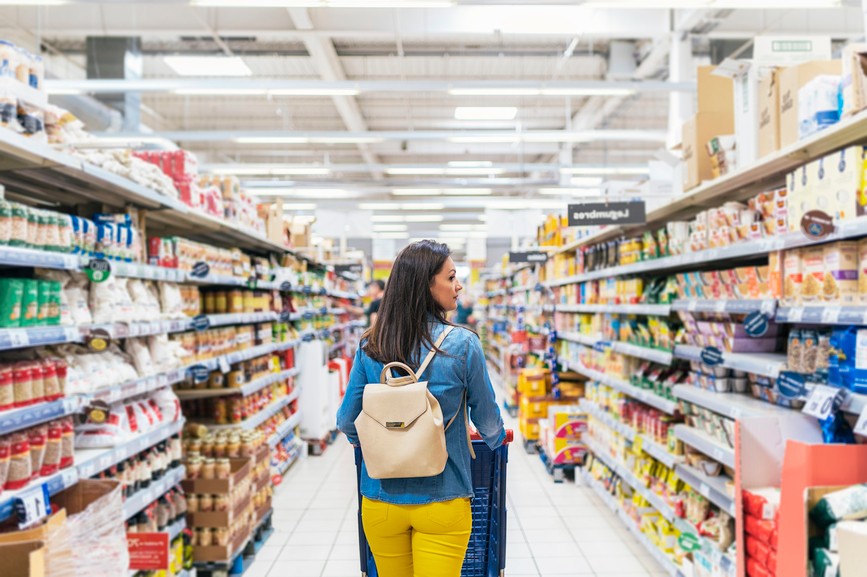
To get ahead of this problem, it’s important to understand why ORC is increasing, what it looks like today, and which loss prevention techniques are most effective. At VIRA Insight, we have over two decades of experience outfitting retail spaces with sleek, effective, customizable loss prevention solutions.
Our loss prevention systems are effective because they are informed by research and experience. Today, we want to share what we’ve learned about retail theft with you so that you can make smart decisions to protect your business. Here’s what you should know now about loss prevention:
RETAIL THEFT IS AN EXPENSIVE PROBLEM
According to the NRF, retailers lose an average of $719,548 for every $1 billion in sales to ORC. Even before the pandemic made this problem worse, 22 of the largest retailers reported losing $61.7 billion due to theft, fraud, and other retail shrinkage in just one year (2019).
Once retail theft occurs, recovering financial loss is extremely difficult. In fact, only 2.9 percent of all retail theft losses are recovered by retailers, resulting in massive shrinkage. This is why, when it comes to saving your business money, retail theft prevention is key.
WHY RETAIL THEFT INCREASED DURING THE PANDEMIC
During the COVID-19 pandemic the nature of retail theft changed as it increased. Widespread financial hardship led to an increase in necessity-driven theft. As shoppers became more motivated by need, theft transitioned from targeting expensive items like electronics to shoplifting essential items like food, products for infants, and household commodities. Unsurprisingly, essential retailers were hit particularly hard, with shoplifting in that sector increasing by 8.6 percent.
Last year it was necessary for retailers to adapt their businesses to comply with COVID-19 protocols. But in many cases, the same protocols that were designed to keep customers safe also enabled thieves. The prevalence of masks allowed for more anonymity from security camera footage and staff. Additionally, pandemic protocols occupied staff attention, making them less likely to focus on theft prevention.
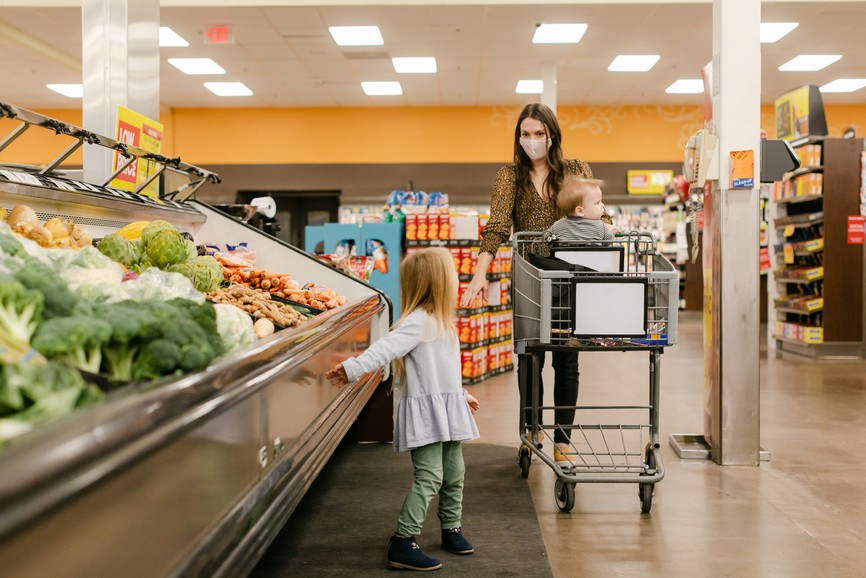
AS COVID-19 EASES, RETAIL THEFT WILL NOT
During the pandemic, many retailers shifted to or increased the use of self-checkout stations. Having invested in that technology and infrastructure, those retailers are expected to continue to rely on contact-free checkout post-pandemic.
While self-checkout has many advantages, it also results in greater levels of loss. According to a 2018 Efficient Consumer Response survey, retailers with self-checkout report losses from 33 percent to 147 percent higher than stores with fixed self-checkout.
Even as mask use becomes less ubiquitous and the economy and job market recover, higher levels of retail theft are expected to remain. Potential continued boldness from shoplifters may continue even as they shift back to targeting more expensive products like designer items, high-end beauty products, and electronics.
HOW TO PROTECT AGAINST RETAIL THEFT
Investing in preemptive measures to prevent retail theft up front is key. At VIRA Insight, we offer a variety of flexible, customizable solutions designed to maximize protection against ORC. From anti-sweep hooks and lockboxes to full security cases, our Fortress series systems can be tailored to suit your business’ specific needs, helping you stop retail thefts and related financial losses before they happen.

